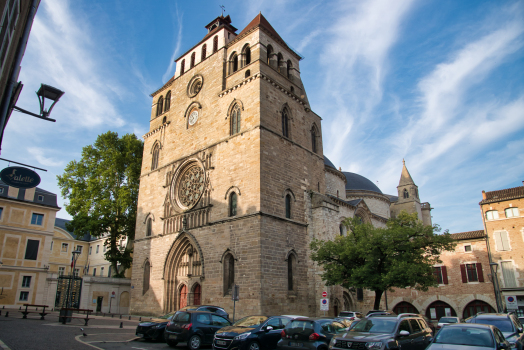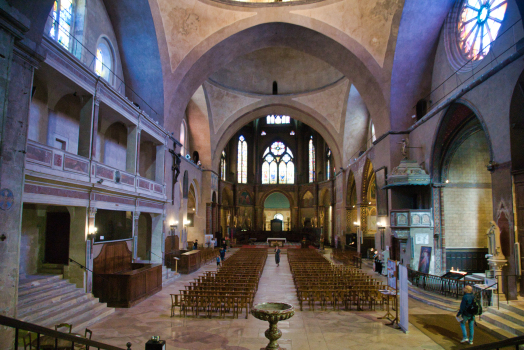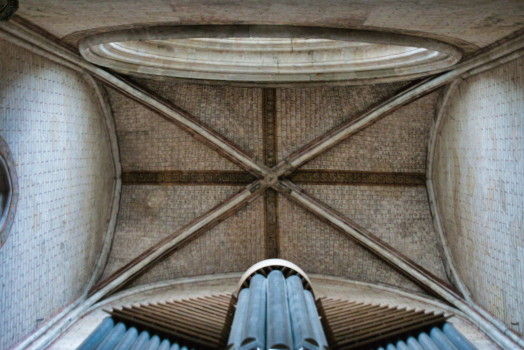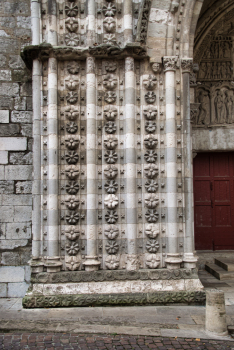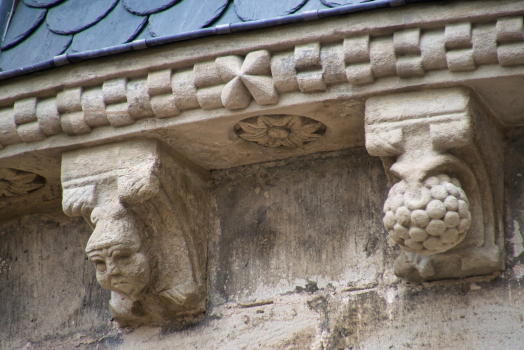General Information
| Name in local language: | Cathédrale Saint-Etienne |
|---|---|
| Beginning of works: | 1080 |
| Completion: | 1135 |
| Status: | in use |
Project Type
| Structure: |
Dome |
|---|---|
| Function / usage: |
Cathedral |
| Material: |
Masonry structure |
| Architectural style: |
Romanesque Gothic |
Awards and Distinctions
| 1998 |
part of an ensemble
for registered users |
|---|---|
| 1862 |
for registered users |
Location
Technical Information
Dimensions
| width | 20 m | |
| height | max. 32 m | |
| domes | diameter at base | 18 m |
| nave | length | 56 m |
| piers | pier dimensions (plan view) | 10 m x 4 m |
| western façade | thickness of Western wall | 7.50 m |
Materials
| building structure |
stone
|
|---|
Chronology
| 1112 | Construction of the cathedral begins. |
|---|---|
| 1120 | Construction of the nave begins. |
Excerpt from Wikipedia
Cahors Cathedral (French: Cathédrale Saint-Étienne de Cahors) is a Roman Catholic church located in the town of Cahors, Occitanie, France. A national monument, it is an example of the transition between the late Romanesque and Gothic architectural traditions.
Overview
The church was built by bishop Gerard de Cardaillac in the 11th century, over a church erected in the 7th century by St. Didier of Cahors. It was consecrated by Pope Calixtus II on September 10, 1119, and completed around 1135. The church, located in the city's centre, has the sturdy appearance of a fortified edifice: at the time, the local bishops were in fact also powerful feudal lords in their role as counts and barons of Cahors.
The façade, renovated in 1316–1324 by Guillaume de Labroue, cousin of Pope John XXII, confirms this impression: it resembles a heavy castle wall, consisting in a porch surmounted by a bell tower enclosed between two towers. The six windows, as well as those on the porch sides, are rather narrow; the only elements characterizing it as a church are the magnificent portal with triple splays, surmounted by a gallery of small arches, and the large rose window.
On the northern side is a secondary façade in Romanesque style, also fortified.
Nave
The well-illuminated nave is 44 x 20 m wide. The two massive, 32 m-high, domes in Byzantines style, resting on pendentives, are supported by six huge pilasters. Unusually, there is no transept.
One of the domes is decorated with 14th-century frescoes, depicting the stoning of St. Stephen as well as eight prophets, each riding an animal, in the fashion of Greek or Hindu deities. The walls have numerous other medieval paintings.
Apse
In Gothic style on a Romanesque base (to which belong the columns with decorated capitals), the apse has three chapels with sculptures. The complex forms a pleasant contrast between the white apse and the colorful stained glass and the paintings of the choir.
There are several tombs, such as that of Alain de Solminihac, and the precious relic of the Holy Cap, which supposedly was worn by Christ and which was brought to France by bishop Gerard de Cardillac after his trip to the Holy Land in 1113.
Cloister
A door on the right of the choir gives access to the Flamboyant Gothic-style cloister, built in 1504 by bishop Anthony of Luzech. It has scenes of everyday life and a Madonna.
On the western side is the St. Gaubert Chapel, with the vault decorated with Italian Renaissance paintings and, on the walls, 15th-century frescoes representing the Last Judgement. It is now home to a museum of Religious Art.
Text imported from Wikipedia article "Cahors Cathedral" and modified on 22 July 2019 under the CC-BY-SA 3.0 license.
Participants
Relevant Web Sites
Relevant Publications
- : Cahors. Cathédrale Saint-Etienne de Cahors. Presented at: Congrès archéologique de France, 100ème session, 1937. Figeac, Cahors, Rodez, pp. 216-265.
- (1989): Cathédrale de Cahors - Peintures murales du 14ème siècle récemment découvertes dans le massif occidental. Presented at: Congrès archéologique de France, 147ème session, Quercy, 1989, pp. 70-77.
- (1989): La cathédrale Saint-Etienne de Cahors. Presented at: Congrès archéologique de France, 147ème session, Quercy, 1989, pp. 9-69.
- (1995): Histoire de l'architecture française (Tome 1). Du Moyen Age à la Renaissance, IVe siècle - début XVIe siècle. Editions du Patrimoine, Mengès, Paris (France), pp. 478.
- (1997): Les plus belles cathédrales de France. Sélection du Readers Digest, Paris (France), pp. 96-97.
- About this
data sheet - Structure-ID
20003244 - Published on:
15/05/2002 - Last updated on:
07/12/2023

